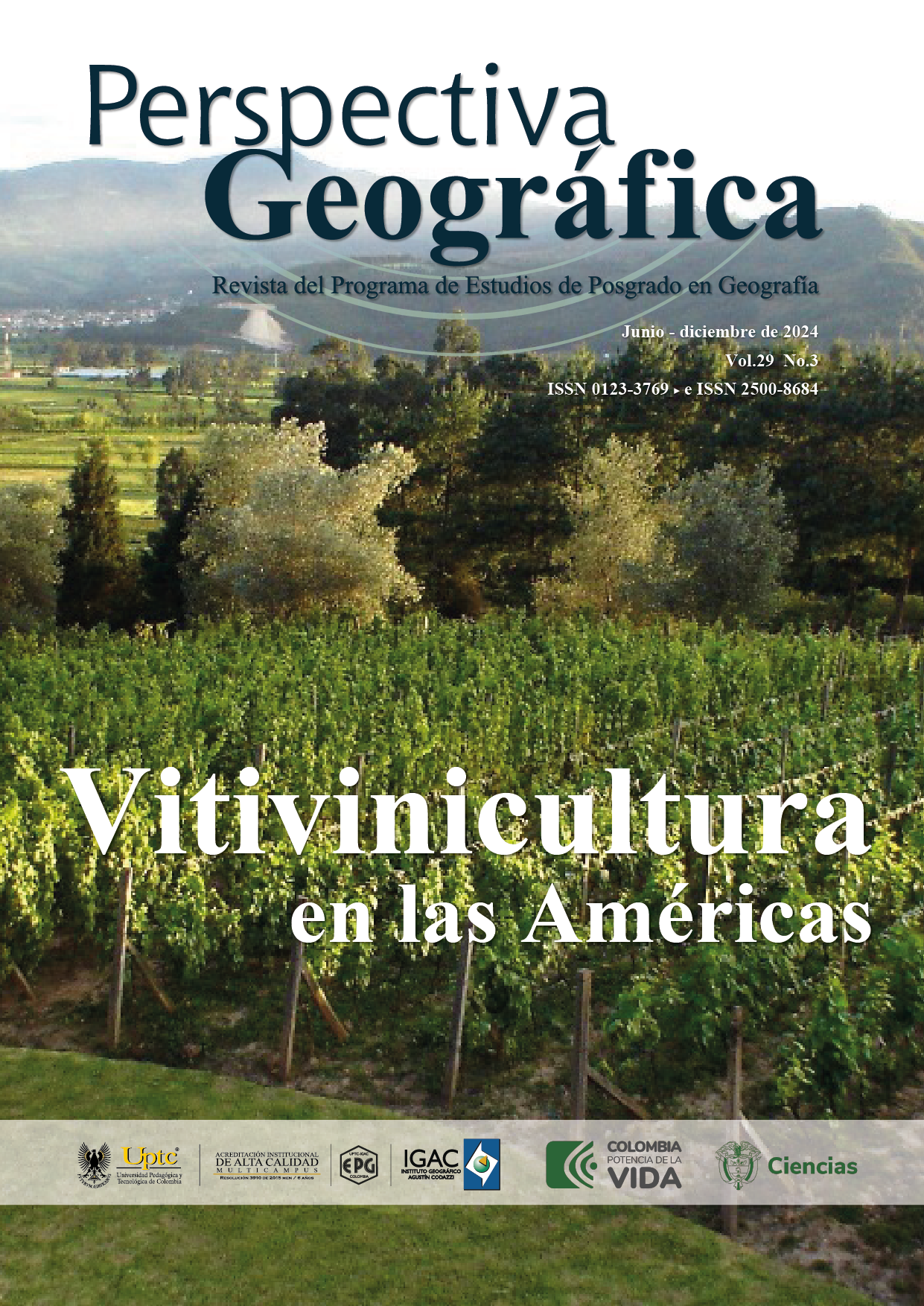Non-Iberian immigrant contribution to the viticulture and wine production in the South Region of Brazil: case of the Germans

Abstract
The purpose of this study was to analyze, recognize and rescue the non-Iberian immigrants’ role in the development of Brazilian viticulture and wine production, mainly in South Region of Brazil, rewriting the historical narrative. To reach this objective, in the first place, was made an analyze of German immigration process, focusing on those who expanded this agroindustry activity, geolocating the initial colonial productive areas. As methodology was analyzed a specialized literature bibliography, maps and records of historical research. German settlers didn´t employed slave labor. Despite not having remaining and not getting the same progress as Italian immigrants, was verified that, on the state of Rio Grande do Sul, German had implemented vineyards and wineries since the beginning of their colonization, sponsoring and helping the Italian immigrants who arrived, in Brazil, fifty years late, that was fundamental to the development of this beginning agroindustry activity. They provided logistic support, tools, grapes seedings and stay. Italian immigration was the main vector of Brazilian winemaking diffusion modernization, building the only consolidated wine-growing region: Serra Gaúcha. However, the current level of the wine quality that Brazil had reached, presents their precedents and precursors that must be rescued and recognized. In second place, was researched data survey of the traditional and modern wine production areas in the state of Santa Catarina that received non-Iberian immigrants, that is, IP South Coast and IP Santa Catarina Plateau were highlighted. Under the globalization process it is important to face competitors, fighting for local Geographic Indication as competitiveness strategy.
Keywords: geographic indication; German immigration; non-Iberian immigration; south region of Brazil; terroir; viticulture/wine production
Keywords
geographic indication, German immigration, Italian immigration, south region of Brazil, terroir, viticulture, wine production
References
- Allembrandt, R., Bem, B. P. de., Marcon, F. J. L., Outemane, M. V., Rufato, L. & Würz, D. A. (2016). Diagnóstico do enoturismo na região dos vinhos de altitude de Santa Catarina. Revista Brasileira de Viticultura e Enologia. Ano 8. n.8. set, p132.- 138.
- Arbex, J. J. & Olic, N. B. (1997). A hora do sul. Moderna.
- Bellé, S., Medeiros R. M. V., Tonini, H. (2021). Paisagem cultural vitícola da Serra Gaúcha: reflexões sobre patrimônio e turismo. Revista Latino-Americana de Estudos em Cultura e Sociedade. V. 07, ed. especial, set.
- Blogoslawski, I. P. R. (2000). A escola alemã no alto vale do Itajaí: colônia Matador, Bella Alliança - 1892-1930. Tese de mestrado. UFSC
- Cabral, C. (2007). Presença do vinho no Brasil - um pouco de história. 2ª ed. Editora Cultura.
- Dardeau, R. (2015). Vinho fino brasileiro. Editora Mauad X.
- Dardeau, R. (2020). Gente, lugares e vinhos do Brasil. Editora Mauad X.
- Editora Educa Books. (2018). Terroir. Dictionnaire le Robert micro.
- Embrapa. (2023). Indicações geográficas de vinhos do Brasil. https://www.embrapa.br/uva-e-vinho/indicacoes-geograficas-de-vinhos-do-brasil.
- Gaioli, O. (2019). Como altitude influencia os vinhedos do Brasil.
- https://revistaadega.uol.com.br/artigo/como-altitude-influencia-os-vinhedos-do-brasil_11989.html.
- Gama, F. (2014). Globalização e fragmentação: do vinho boutique ao vinho shopping center. H.P. Comunicação Editora.
- Gama, F. (2018). Coletâneas e colheitas. pensando as uvas e os vinhos com um olhar geográfico. H.P. Comunicação Editora.
- Gama, F. (2021). A nova geografia da produção de uvas e vinhos no Brasil. Editora Lux.
- Gama, F. (2018). A nova geografia da produção vitivinícola do Brasil: concentração e desconcentração espacial. Revista Brasileira de Viticultura e Enologia, n.10, p.156-165.
- Giesbrecht, H. O. & Minas, R. B. A. (2016). Indicações geográficas brasileiras: vinho. 2. ed. Sebrae, INPI.
- Giovannini, E. & Manfroi, V. (2009). Viticultura e enologia na elaboração de grandes vinhos nos terroirs brasileiros. IFRS.
- IBGE. Indice de nomes geográficos. (2011). IBGE.gov.br/geociencias/metodos-e-outros-documentos-de-referencia/revista-e-manuais-tecnicos/16478-indice-de-nomes-geograficos-volume-1-bcim.html.
- Johson, H. & Robinson, J. (2014). Atlas mundial do vinho. 7a. Ed. Editora Globo Estilo.
- Mello, C. E. C. (2004). Presença do vinho no Brasil: um pouco de história. Editora de Cultura.
- Pizzol, R. & Souza, S. (2014). Memórias do vinho gaúcho. Vol 1 Ed. AGE.
- Pizzol, R. & Souza, S. (2014). Memórias do vinho gaúcho. Vol 3. Editora AGE.
- Pombo, R. (1959) A história do Brasil: descobrimento e colonização. Vol. 1. Jakson.
- Rockenbach P. J. (2013). A saga da família Rockenbach - do século XVII ao Século XXI. Editora Oikos.
- Rosenthal, N. I. (2009). Vinhos de boutique: artesanais, raros e tradicionais. Editora Larousse.
- Rosier, J. P. (2018). A viticultura de altitude no planalto catarinense. Territoires du vin, Chair Culture and Traditions of Wine, University of Burgundy. Unesco.
- Santos, M. (2020). A natureza do espaço: técnica e tempo, razão e emoção. 4ª ed. Editora da Universidade de São Paulo,
- Schwarz, M. D. (2019). Imigração alemã no Brasil. https://www.familiaschwarz.com.br/post/imigra%C3%A7%C3%A3o-alem%C3%A3-no-brasil
- Simon, P. A. (2009). Diáspora do povo gaúcho. Gráfica Senado Federal.
- Sodré, N. W. (1957). O Tratado do Methuen. Editora do Instituto Superior de Estudos Brasileiros.
- Woortmann, E. F. (2000). Identidades e memória entre teuto-brasileiros: os dois lados do Atlântico. Horizontes Antropológicos.
